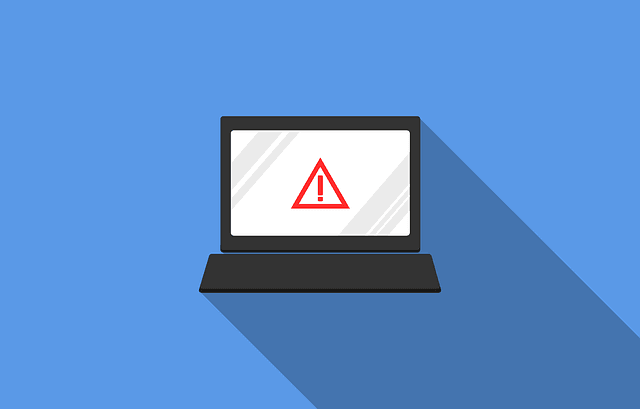Hacking has evolved into a fully fledged criminal industry throughout 2024, affecting virtually all areas of business, government, and individual lives. With many companies adopting cloud technologies, AI, and IoT devices into their operations, there is increased exposure to threats and risks within their systems. Ransomware continues to reign, and as noted below, these attacks can severely lock down key infrastructure and require enormous ransom payments. Effective cyber attack recovery strategies are essential to mitigate the impact of such attacks and ensure that organizations can swiftly restore their operations and protect their valuable data.
Cyber gangs have not remained idle and went on steps of converting phantom phishing scams into ones using other AI generated contents. On the same note, state actors have recently been identified as being more frequent; their attacks are mainly on espionage and targeting national security. Targeting vulnerabilities which are unknown to developers and vendors, zero-day exploits are a major threat to well protected systems. As for this, organizations were introducing an elevated level of security measures, such as artificial threat identification, data encryption, and training to counteract these expanding threats and safeguard private information.
Table of Contents

Recent cyber attack scenario tackled by Himcos
A medical centre, which had its platform managed by Himcos, fell victim to a cyberattack. It caused a devastating blow, rendering the whole system ineffective, and paralyzing patient records and important operations. Although the technical security of the centre was very strong, the nature of the attack was able to bypass these safety measures to infiltrate the system. As part of the response, we implemented a comprehensive healthcare platform data recovery strategy to restore access and ensure the protection of sensitive information.
Himcos was able to ensure the immediacy of an advanced Disaster Recovery solution to restore its important systems and protect its data. With the all-encompassing reaction, Himcos not merely aided the medical centre in restoring the platform but also in enhancing it while preventing any such situations in the future and thus, preserving the continuity of the care as well as the privacy of the patient
The Day Everything Stopped: A Lesson in Cybersecurity
They said that one morning, they woke up and all the equipment was dead. Our client, whose platform was available through the internet, had fallen victim to a very serious cyber incident. This penetration was so severe that it compromised all functionalities of the system, making the platform completely non-functional. As a crucial medical platform handling patients’ personal records, the consequences were unsavoury and required an urgent cyber attack recovery. The situation demanded immediate action to restore the platform’s operations and secure sensitive data.
This attack was not a first. More to the point, it was the third attempt to hack the platform through cyberspace. The first two attempts were smoothly salvaged by our developers at Himcos. Having outlined the threats, we were able to eliminate them by changing the passwords and tuning up the levels of safety to protect the system.
The third time was different. This time, however, the attackers succeeded, revealing a hole that was left open and unguarded, leading to a critical breach that required a comprehensive cyber attack recovery to restore the platform and prevent future vulnerabilities.

The primary reason was a typical mistake:
This tension between creating new features versus enhancing the capabilities of the system security seems to be prevalent. The owner of the platform had been actively funding development of higher functionality increasing capabilities of the platform for users. However, improvements to security had become a low priority in the process. Although we were trying to be safe on the surface, the system design did not have the necessary reinforcements to resist complex targeted threats.
It is usually crucial to build new features to grow a platform and scale up engagement, while it is lethal to neglect security, as it will leave a platform open to various types of cyber threats. An audit test for risks was run after the breach, and what we expected to see was true: the lack of strong defences left the system exposed. Without deeper investment in security structures, they had become an easy target over the years, making a cyber attack recovery essential to restore the platform’s integrity and safeguard it against future threats.
More so, we understood that responding was central in such incidents within Himcos. Our team leapt into action to perform an exhaustive crisis management strategy. We got the operations of the platform back up, retrieved important data, and strengthened the server with better protection systems. In our response, we put in place a more robust, even a layered approach to stop future occurrences and safeguard the platform continually.
This was a wake up call. It is choral of the need to ensure that while embracing change there is Emphasis on securing the organization’s interests. New features attract users and create additional requests but inadequate security investment can compromise even the platform’s existence. For us at Himcos, it is important not to just develop systems that are new but also immune to various emerging evils of computer crime.

Here’s how we tackled the issue step-by-step:
At Himcos, we handle the situation professionally to prevent the cyberattack and to recover the lost platform
1. Assessment
The first thing that we had to do was to establish exactly how bad the attack was. In order to determine the nature and depth of the breach, we also performed an evaluation on the platform in question. This included analyzing log data and entry records to identify which systems were compromised. By assessing the extent of the damage, We were able to calculate the resources required for a full cyber attack recovery and plan an organized approach to prevent any further exploitation of vulnerabilities.
2. Damage Evaluation and Quick Repairing Solutions
Thirdly, efforts were made to assess the extent of the damage that was inflicted in the attack. Looking at the parts of the system that were affected we considered if the existent platform could be easily repaired or rectified. This was a critical stage where we identified “damage chots’ – that is areas that were either compromised or corrupted at this point. If some parts of the system were usable, we applied ad hoc solutions or simple workarounds to fix critical and urgent functionalities.
3. Measuring the Severity of the Impact
Once the quick repairs were made, we then looked into much further to determine the full impact incurred. This included checking for errors in the data and reviewing the vital services of the platform. During this phase, we determined which parts can be fixed quickly, and which would need a more drastic reconstruction. That way we were able to comprehensively assess the full extent of the losses in order to focus on restoration appropriately.
4. Restoring from Backups
Knowing the extent of the damage, we went ahead to recover the system. Luckily for Himcos, the firm had established a comprehensive backup regime before this attack. We pulled the latest, clean copy of the platform and started reconstructing all the required elements of the platform. This step was very important in getting the platform back on its operational mode and also making certain that key functionalities would resume operations without waiting for another part of the program to open.
That is why, having counteracted the attack and restoring the platform, we implemented a comprehensive cyber attack recovery strategy. We strengthened the system against similar scenarios and conducted a structured reaction to ensure long-term protection and resilience.

Step-by-step plan
At Himcos, we also developed a step-by-step plan of how the company was going to recover its database when under attack from the social engineering cyber attackers to make sure that we were in a position to immediately restore our client’s platform. Here’s an explanation of each step we took:
1. Back up of data into cool archives Daily
We had a regular practice of database dumps, and these backups were kept in secure cold archive systems. This was not only a protective action to avoid data loss but also beneficial in terms of cost savings for storage and subsequent retrieval. It proved invaluable during the cyber attack recovery process, as we could refer to the last stable version of the database if any new values were compromised during the attack. Such an approach helped reduce the risk of failure and made the recovery process much smoother.
2. Weekly Screenshot/Snapshot Regulation
At Himcos, for example, we set up a weekly structure of the so-called snapshot to always take a picture of the server and its databases at the time of implementing the test. This policy lets us make copies of the platform’s state at a specific point in time, including all configurations and data.
In case of failure, we were able to restore quickly to the previously recognized proper position, preventing data loss and data corruption. These snapshots were extremely helpful during the cyber attack recovery process, ensuring that our recovery plan was both effective and efficient.
3. Version Control for Code
In developing the code for the platform, we used a stable version control system. This made it possible for us to systematically capture all the changes made to the system. By keeping a log of changes, we could identify which versions of the code were stable until problems emerged.
This made it easier to pinpoint the exact cause of the issue and revert to a more stable build when necessary. It also played a crucial role in the cyber attack recovery process, allowing us to track the impact of the attack and ensure that the latest code did not compromise the platform’s structure. Additionally, it contributed to collaborative development by enabling checks on how new implementations affected the platform’s overall integrity.

By following these predefined steps, Himcos performed a cyber attack recovery in the database for a program that we had established to be quite solid. It not only saved a lot of time during the loss of data, but it also helped improve regular backups, real-time snapshots, and version controls, which in turn acted as a shield of protection against future cyber attacks. This approach ensures that we protect clients’ information and maintain operational continuity regardless of any unsettled scenarios we might encounter.



